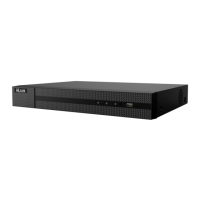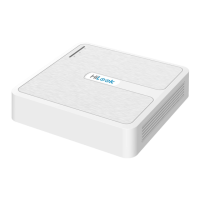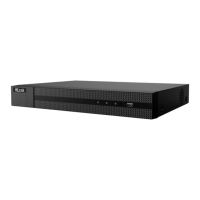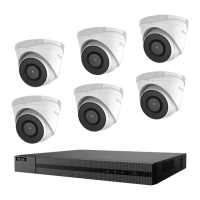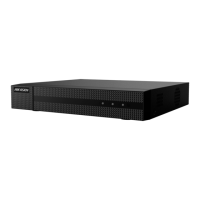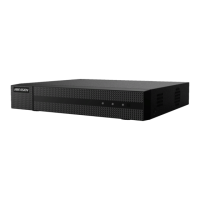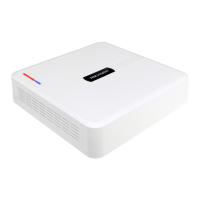
Do you have a question about the HIKVISION HiLook NVR-216MH-C and is the answer not in the manual?
| Model | NVR-216MH-C |
|---|---|
| Incoming Bandwidth | 160 Mbps |
| Outgoing Bandwidth | 80 Mbps |
| Decoding Format | H.265+/H.265/H.264+/H.264 |
| USB Interface | 2 × USB 2.0 |
| Consumption (without HDD) | ≤ 15W |
| Operating Humidity | 10% to 90% |
| Video Input | 16 channels |
| IP Video Input | 16 channels |
| HDMI Output | 1 × HDMI |
| VGA Output | 1 × VGA |
| SATA Interface | 2 SATA interfaces |
| Max HDD Capacity | 6 TB per HDD |
| Network Interface | 1 RJ-45 10/100 Mbps self-adaptive Ethernet interface |
| Operating Temperature | -10 °C to +55 °C (14 °F to 131 °F) |
| HDD Bays | 2 SATA interfaces |
| Power Supply | 100-240 VAC, 50/60 Hz |
Critical safety guidelines for operating the device properly and preventing harm.
Steps to activate the video recorder by setting an admin password.
Overview of different ways to log into the device.
Explains the graphical user interface for live video monitoring.
Functions and controls for pan, tilt, and zoom camera operations.
Introduces the user interface for reviewing recorded video footage.
Steps for playing back standard recorded video files.
How to find and play video related to specific detected events.
Procedures for selecting, clipping, and exporting video segments.
How to search for video, picture, and event files using various criteria.
Basic system settings including resolution, time, and general parameters.
Adding, editing, and managing user accounts and their permissions.
Basic network settings for device connectivity.
Enabling mobile app and remote surveillance system access via HiLookVision.
Adding and managing network cameras connected to the recorder.
Managing storage devices and recording schedules.
Advanced system settings beyond basic configuration.
Advanced settings for live view output and parameters.
Advanced network settings for optimal connectivity.
Managing connected cameras with advanced options.
Setting up various event detection types and responses.
Setting up motion detection zones, sensitivity, and detection rules.
Overview of perimeter intrusion and line crossing detection capabilities.
Defining actions like pop-ups, buzzers, and notifications for alarms.
Steps for logging into the web interface and installing necessary components.
Navigating the live view screen through the web browser.
Accessing and using the playback features via the web browser.
Accessing and modifying device settings through the web interface.
